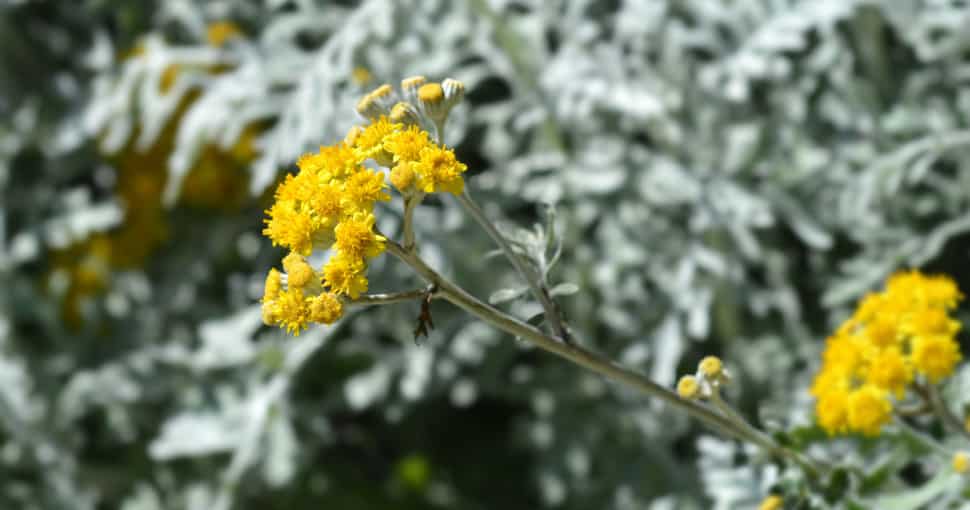Ragwort (Senecio jacobaea) is a plant with tall, straight stems on which bright yellow daisy-like flowers and deeply cut toothed edged leaves grow. The plant thrives in dunes, woodlands, and grassland communities and is found in waste areas alongside roads and railways, where it grows abundantly.
Contents
The plant is listed as a prohibited noxious weed in many countries, and farmers take preventative measures to prevent the spread. Ragwort is blamed for many deaths in horses and other animals when they ingest large amounts of its toxic chemicals. However, when the plant is present in silage or hay, the poisoning seems to be chronic.
During one season, a Ragwort plant may produce 200 to 2,000 flowers and can disperse up to 150,000 seeds, so spreading for this plant is very easy. This plant is an aggressive colonizer of any bare soil. A few weeds look like and are often mistaken for the Ragwort Plant.
The plants discussed in this article all have bright yellow flowers like Ragwort, most belong to the Asteraceae (daisy) family, and some have similar leaves or seeds. The plants grow in the same habitats as Ragwort, and all are listed as invasive, and a few are noxious weeds. These plants are:
1. St John’s Wort
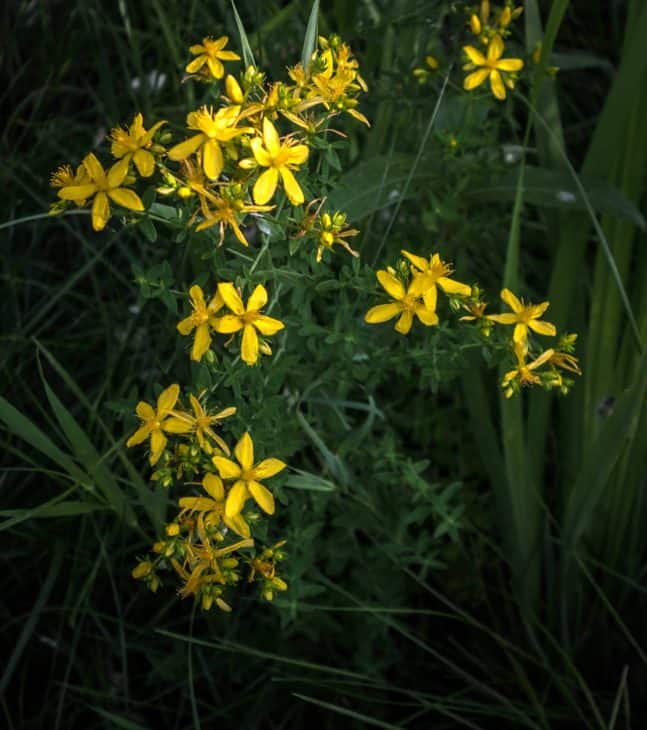
St John’s Wort (Hypericum perforatum) is an upright perennial herb from the Hypericaceae family. The plant invades pastures and roadsides in Northern California and Oregon and is widely found in many temperate countries worldwide. The herb grows up to 120 cm tall, and the stems are woody near the base.
The leaves are narrow, oblong, and yellow-green and are generally 5-30mm long and 1.5-5mm wide. A distinctive character of the leaves is translucent glands that resemble pinpricks when held up to the light. The yellow flowers which look similar to the Ragwort flower, have five petals with sticky sepals, which, when ripe, split open to reveal the seeds.
The seeds of this herb are black, lustrous, and rough netted with coarse grooves. A mature plant can produce up to 33,000 seeds every year. St John’s Wort is often mistaken for Ragwort, especially in areas where both weeds are present. Although St John’s Wort is used as a herb for medicinal purposes, it is, like Ragwort, toxic to cattle and livestock. When ingested, it causes sensitivity to sunlight.
2. Common Fleabane
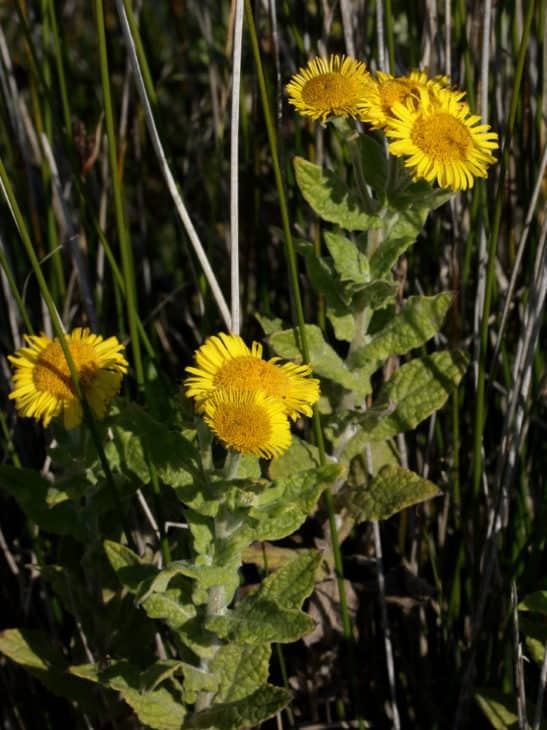
The Common Fleabane (Pulicaria dysenterica) is an attractive perennial plant of the daisy family (Asteraceae), like the Ragwort plant. Common Fleabane plants are native to Europe, Western Asia, and the Mediterranean woodlands. The plant reaches a height of 60cm, and it forms a dense cluster of plants that spread from the plant’s roots.
Alternately arranged leaves which are downy, wavy-edged, and lanceolate, clasp the stem, which contains a salty, astringent liquid. The stems and leaves of this plant are covered with short glandular hairs that have a velvety feel. The flowers are bright yellow with a center of 40-to-100-disc florets surrounded by 20 to 30 narrow ray florets, like the daisy-like Ragwort flower.
The plant has a strange odor that is often described as being “camphor-like” or spicy, like the Ragwort plant, which has an unpleasant smell when the leaves are bruised. Common Fleabane is found throughout the UK and in many parts of the US and grow on banks of streams as they prefer marshy and permanently damp soil. The plant is an evasive weed as it displaces native plants.
3. Meadow Hawkweed
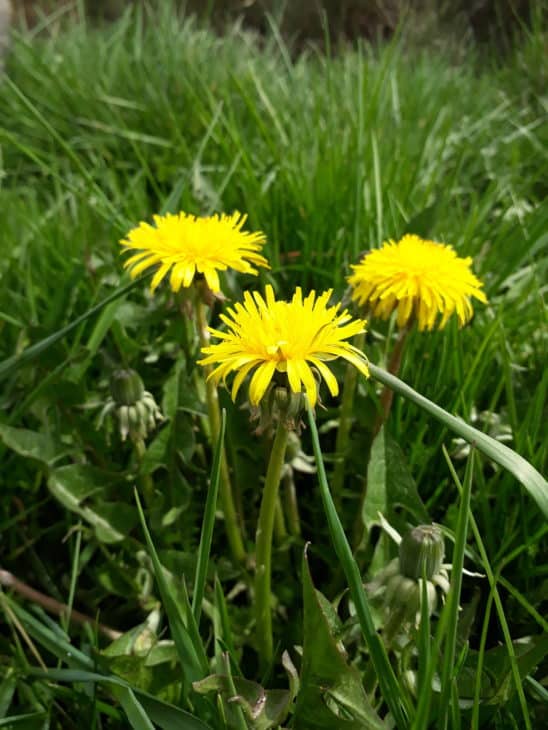
The Meadow Hawkweed plant (Hieracium caespitosum) is a perennial plant of the Asteraceae family. Standing tall and erect, it reaches a height of 3ft, and each plant produces about 10 to 30 flower stems. The flower of this plant is a bright yellow flower head in a compact flat-topped cluster, which looks very similar to the flower of Ragwort.
The leaves are long and narrow, not lobed, are hairy on both sides, and form a basal rosette, like Ragwort. The entire plant contains a milky liquid. Meadow Hawkweeds have a shallow root stem, and several underground creeping stems called rhizomes, which can also produce plants. Because the plant reproduces by seeds and its roots, it spreads very easily and can suppress other plants.
Meadow Hawkweed plants are found along roadsides, gravel pits, and pastures and aggressively invade meadows and forest areas.
4. Common Groundsel
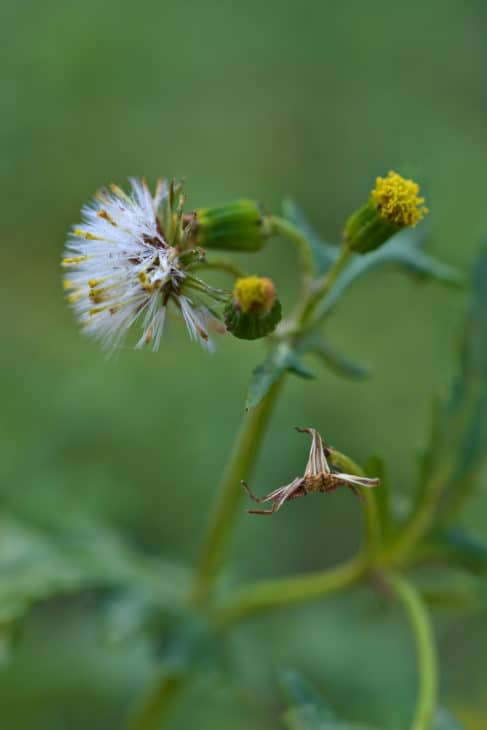
The Common Groundsel (Senecio vulgaris) plant is classed as an annual weed in the Asteraceae family. The plant is also aptly known as ‘ground swallower,’ which is how quickly this weed spreads. This plant stands tall with an erect stem that reaches a height of 60 cm. The leaves are deep irregular lobes and coarsely toothed margins with black tips, alternately arranged on the stem.
Groundsel flowers are bright yellow and, on maturity, open to reveal a ball of white-tufted seeds which are dispersed into the wind. Ragwort seeds also have a pappus of hair on the seeds to aid long-distance dispersal. Along roadsides, in landscaped areas, fields, orchards, and vineyards are some areas where we can find the Common Groundsel weed.
Common Groundsel contains toxic compounds harmful to humans and animals when the plant is ingested in large quantities over several weeks or months. Some of the alkaloids in this plant are the same as those found in the Ragwort plant. These two plants are closely related and, like Ragwort, feed the Cinnabar Moth, as well as feeding several species of beetles and flies.
5. Yellow Loosestrife
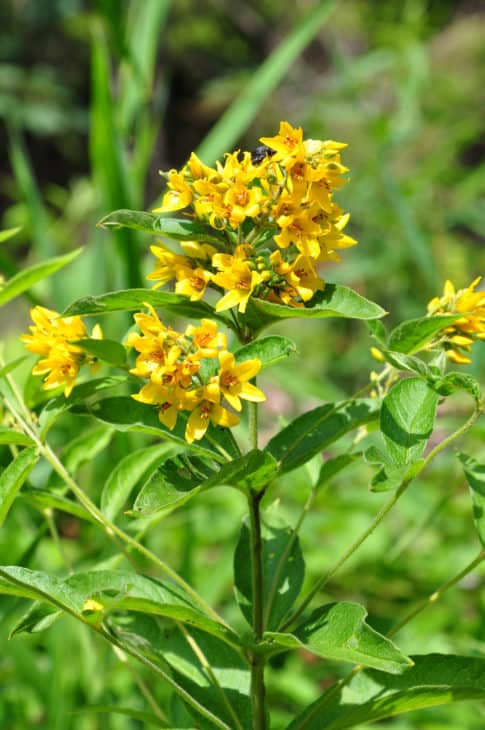
The Yellow Loosestrife (Lysimachia vulgaris) is a herbaceous perennial that grows to 3ft in height and is from the Primulaceae family. Yellow Loosestrife plants are native to the wetland areas of Europe and Asia. In the early 1900s, it was introduced to North America as a garden ornamental. The plant has been naturalized in damp habitats such as marshlands, wet woods, ponds, roadside ditches, and waste places.
The stem of the Yellow Loosestrife is tall and upright with 3 or 4 whorls of ovate-lanceolate-shaped leaves. The flower consists of 5 cup-shaped bright yellow petals with a reddish-brown tinge at the petal base. A wide seed capsule on the flower splits open when ripe and scatters the seeds. This plant also reproduces by its rhizome underground stems, so it can become invasive.
Yellow Loosestrife is a weed that should be monitored so that it does not spread widely, and care must be taken when handling the plant as it could cause an allergic reaction or skin irritations.
6. Tansy
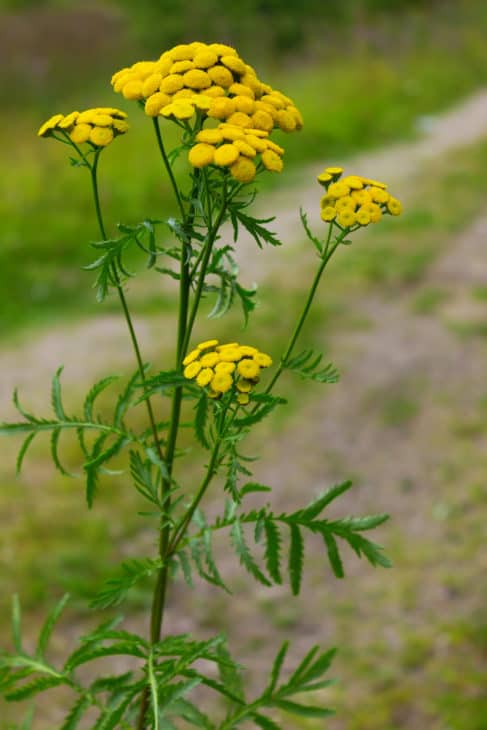
The Tansy plant (Tanacetum Vulgare) is a perennial, herbaceous flowering plant from the Asteraceae family. Tansy is also known as Common Tansy, Bitter Buttons, Cow Bitter and Golden Buttons. The plant is native to Europe and Asia but is found in North America and other parts of the world. In some areas of America, Tansy has been invasive.
The plant can reach a 50-150cm height and has a stout, erect, reddish, and usually smooth stem that branches near its top. Alternate and finely divided, pinnately lobed compound leaves with saw-toothed edges grow from the stem, very similar in appearance to the leaves of the Ragwort plant.
The flowers are roundish, flat-topped, button-like, and produced in mid to late summer. The plant smells like camphor with a hint of rosemary. Like Ragwort, the Tansy plant’s leaves and flowers are toxic if consumed in large quantities. Some insects resist the toxins, like the Tansy beetle, which exists almost exclusively on the Tansy plant.

